IRP Focus: Biomedical Engineering & Biodesign: Research Projects
Design of "Cellular FedEx Systems"
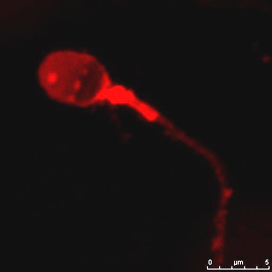
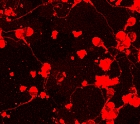
T. Kyle Vanderlick, Department of Chemical & Environmental Engineering; James McGrath, Yale School of Medicine; Gabor Huszar, Yale School of Medicine
Nature relies on compartmentalization at the cellular level and her packaging material of choice is molecularly-thin membranes formed primarily of phospholipids and proteins. It’s surprisingly easy to create man-made phospholipid membrane sacs—often called vesicles or liposomes—and to load these membrane “containers” with various types of cargo, such as drugs or pesticides. Polymeric analogs—called polymersomes—can also be readily fabricated, and both types of systems can be created at the nano- and micron-size scale. There are many potential applications for membrane-based “shipping containers” especially if novel transportation mechanisms can be developed.
Developing Optical Materials Informed by Bird Feather Structures
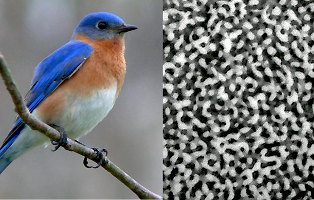
Eric Dufresne, Dept. of Mech. Eng. & Mats. Sci., Dept. of ChE & EnvE, Dept. of Physics, Dept. of Cell Biology; Simon Mochrie, Dept. of Physics, Dept. of Applied Physics; Hui Cao, Dept. of Physics, Dept. of Applied Physics; Richard Prum, Dept. of E&EB, Peabody Museum of Natural History
Some of the most stunning colors in nature are not created by pigments, but are instead the result of light scattered by nanoscale structures. The vivid blues observed in the feathers of Bluebirds and Blue Jays are just one such example.
Exploiting the Novel Properties of Bulk Metallic Glass

Themis Kyriakides, Dept. of Biomedical Eng., Yale School of Medicine; Jan Schroers, Dept. of Mech. Eng. & Mats. Sci.
In the field of biomedical implants, device developers rely on materials whose surface properties can be controlled and modified, that can function in nanoscale devices, and that are biocompatible. Having struck on novel methods for exploiting the unique properties of metal alloys known as bulk metallic glasses, mechanical engineers and materials scientists in the Schroers Lab are collaborating with biomedical engineering colleagues in the Kyriakides Lab to expand that materials’ application to medical uses.
Designing Functional Proteins that Move Electrons
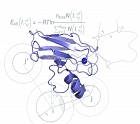
Corey J. Wilson, Dept. of ChE & EnvE
Caltech theoretical chemist Rudolph A. Marcus won the Nobel Prize in 1992 for his contributions to the theory of electron transfer reactions in chemical systems. But he did not present an instruction manual for replicating them.
Developing New Materials at Warp Speed
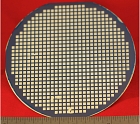
Jan Schroers, Dept. of Mech. Eng. & Mats. Sci.
In recent decades, high-throughput screening of chemical compounds revolutionized the pharmaceutical industry. Now, Yale engineers are set to revolutionize the understanding and development of materials with a technique they’ve dubbed “high-throughput characterization.”
Predicting the Course of Cardiovascular Disease with Computer Models
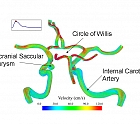
Jay Humphrey, Dept. of Biomedical Eng.
In the emerging field of predictive medicine, cardiovascular disease is a prime target. Being able to chart its progression could enable physicians to prognosticate and prescribe a course of treatment, as well as save countless time, pain, and expense for cardiac patients. Meeting that challenge requires collaboration among engineers, computational scientists, and geneticists.
Speedier Gene-Sequencing through Molecule Trapping
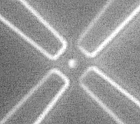
Mark Reed, Dept. of Electrical Eng.
Faster and cheaper gene sequencing is the Holy Grail of personalized medicine, which is why developers of “next-generation” sequencing technologies have been striving for nearly a decade to reduce the cost of reading a human genome to under $1,000. One vexing obstacle to this goal has been the difficulty of isolating single DNA molecules in their natural water-based environment.
Interpreting and Quantifying Images with Computers
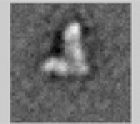
Hemant Tagare, Yale School of Medicine, Dept. of Biomedical Eng., Dept. of Electrical Eng.; Frederick Sigworth, Yale School of Medicine, Dept. of Biomedical Eng.; Hongwei Wang, Dept. of MB&B
Teaching a computer to understand and interpret an image is a difficult problem that engineers have long been trying to solve with sophisticated mathematics and computational power. The problem becomes especially challenging when the image is noisy, out of focus, or contains confusing extraneous information.
A Control Theoretic Analysis of Biological Neural Systems

K.S. Narendra, Dept. of Electrical Eng.; Stephen Robinson
The brain is frequently described as the most complex machine in the known universe, yet our scientific understanding of how it works is still in its infancy. New tools and techniques have fueled the growth of a body of observations in biological systems that present a great opportunity for further analysis, and a richer understanding of these processes in action.
Application of Systems Engineering To Human Motor Control
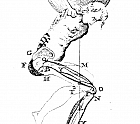
Kumpati Narendra, Dept. of Electrical Eng.
Controlling the human body is a formidable task. It takes the newborn baby countless experiments with its limbs to acquire motor control skills needed to ambulate. Most people take for granted the ability to control movement, unless of course they are afflicted with a movement disorder.
Targeting Chromatin to Combat Viruses
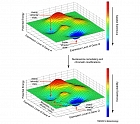
Kathryn Miller-Jensen, Dept. of Biomedical Eng.
Typically, when a person is infected by a virus, the host cell expresses the viral DNA, leading to proliferation in the body. Some HIV-infected cells, however, fail to express viral DNA. These cells are immune to conventional antiviral therapy, but they can reactivate later. Consequently, HIV patients must continuously take antiviral therapy. It remains unclear why infections in some cells become latent, while infections in other cells, even in the same patient, lead to active viral replication.
Unraveling Microalgae Genetics to Perfect Biofuels
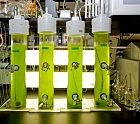
Jordan Peccia, Dept. of ChE & EnvE
Though the idea of producing biofuels from algae is not new, scientists as yet know little about the genes that algae use to make lipids—fats that can be used as biofuel—or how they can be turned off and on under different environmental conditions. As attention to alternative energy sources increases, however, renewed attention is being paid to the genetic makeup of microalgae.
Addressing Key Challenges in Biomaterials
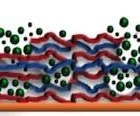
Paul Van Tassel, Dept. of ChE & EnvE
Biomaterials are ubiquitous in modern medicine, from prosthetic limbs to device coatings, and hold promise for future applications like scaffolding for tissue regeneration. Biomaterial design presents a key challenge, however: applications often require materials to be both mechanically rigid (to promote strong cell adhesion) and bioactive (i.e. able to communicate specific cues to contacting cells). To date, achieving one of these features usually required sacrificing the other.

